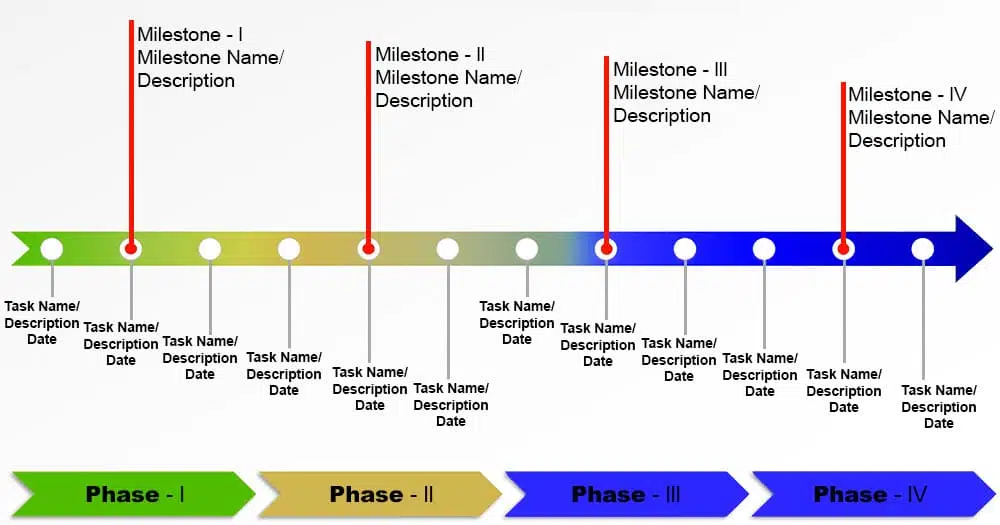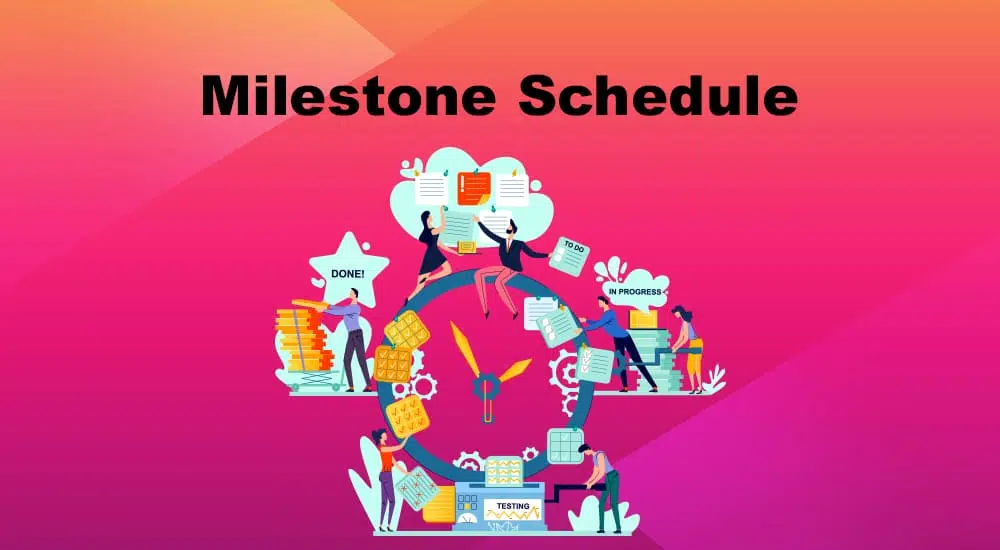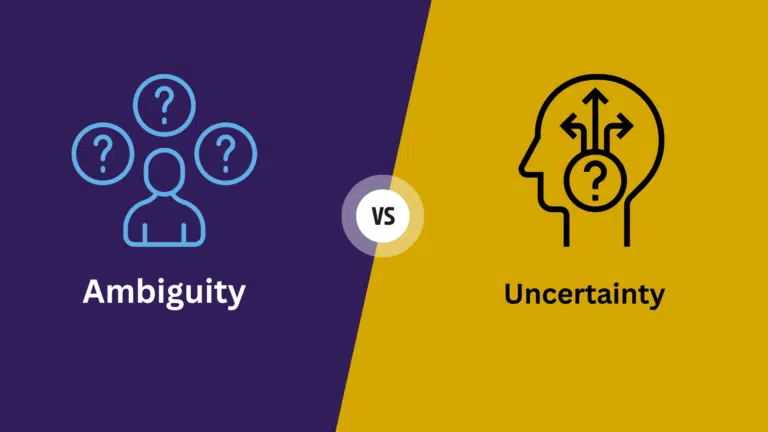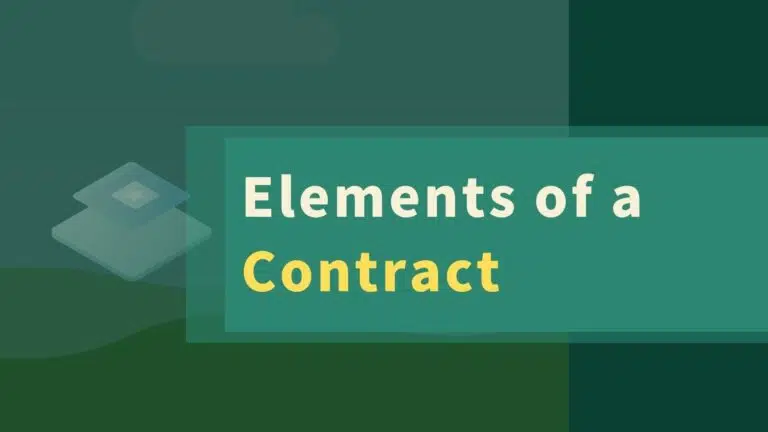The project manager’s job is to plan, assign resources, and oversee project completion. They must ensure that resources are available when needed and in sufficient quantities.
A milestone schedule is a tool that aids project managers in achieving this goal so that the project can be completed on time and within budget.
A milestone chart is another name for a milestone schedule.
Let’s take a closer look at the milestone schedule.
Milestone Schedule
Definition: A milestone schedule or milestone chart is a timeline that uses milestones to divide project work into phases for easy monitoring.
A milestone plan does not highlight the relationship between activities. Therefore, it is best for small projects. It’s also utilized for larger projects where the project manager may quickly produce this timeline to demonstrate to management or project sponsors how the project is progressing without providing every detail.
Because the milestone schedule reveals logical relationships between them, milestone 3 cannot be completed before milestone 2 is completed. All milestones must be completed in the correct order.
Project managers split project work into portions as milestones for simple tracking since tracking a large project with a milestone schedule is difficult.
Consider a mobile banking application as an example. The project will last for eight months. This is a monthly release Agile project with a two-week sprint period. The project’s work is broken down into eight months and two-week sprints.
There will be eight releases for the project. These releases might be thought of as a series of milestones. You’ll design the user interface, review it, and receive the client’s approval in the first milestone. The core banking functionality will be developed in the second milestone.
Milestone planning focuses on achieving a certain objective or specific result. It is more concerned with milestones than with actions. Milestones are marked by occurrences rather than time (e.g., kickoff meeting, phase one delivery). After you’ve planned milestones, you can plan actions at a higher level.
A work breakdown structure breaks the project work into milestones as shown below:
The milestone schedule is an output of the planning process. This is a diagram depicting the project’s activities.
During the project life cycle, the project manager can organize and assist with activities.
This schedule is fluid and varies as the project advances, necessitating last-minute changes to scope, logic, or timeline.
Project management entails tracking progress and comparing results against expectations (project baselines). Without a milestone plan, it is impossible to assess a project’s status effectively.
You’ll go over the budget if you don’t finish the project within the allotted time.
A milestone schedule has the following characteristics:
- The schedule should be easy to understand
- The schedule must be detailed enough to provide the basis for measuring and controlling
- The schedule should highlight the critical tasks
- The schedule should be flexible enough to be modified easily
- The schedule should depict realistic timelines
Milestone Schedule Example
Below is an example of a milestone schedule.

Each deliverable at the milestone is assessed with different color codes as RGA (Red/Green/Amber):
- Green indicates that the team has fully met the criteria for the deliverable
- Amber/Yellow indicates that the criteria have not been fully met, but the team has a work plan to achieve the criteria
- Red indicates that the team has not fully met the criteria and has no plan to meet the criteria (requiring help from management)
The milestone is approved if the metrics for all deliverables are green. Often, approval is given even though there are unresolved issues. The program team is responsible for resolving the open issues later.
There can be a milestone review meeting with key project stakeholders. The following questions need to be validated during the meeting:
- Were the checkpoints completed, i.e., those events that were due to be finished during the last reporting period?
- If yes, were the appropriate deliverables produced out of each of these?
- If yes, did these deliverables meet the expected quality criteria?
- If yes, is work being accomplished with the quality committed?
If the answer is yes, then the milestone is achieved.
If the answer to any of the above questions is no, you need answers to the following questions:
- What is the corrective action plan to fix the deliverables’ defects to meet the quality standards?
- What is the “workaround” plan to complete the delayed milestone?
In other words, when will the project be back on schedule?
How to Create a Milestone Schedule
The following steps are required in sequence to develop a milestone schedule:
- Define the Project Objectives
- Create Milestones
- Reviewing the Milestones
#1. Define Project Objectives
The project manager’s first scheduling responsibility is to define project objectives by putting them into quantitative terms.
A project objective is a statement that specifies the expected outcomes. They will be examined throughout the project life cycle to see if they fall within its scope.
A well-defined project objective should be:
- Attainable: The objective should be achievable.
- Definitive: The objective should be clearly defined.
- Quantifiable: Measurable objectives are mandatory to compare performance to a standard.
- Specific Duration: The time within which the task is to be achieved is to be defined.
#2. Create Milestones
You must logically categorize the work to generate milestones once the project objectives have been defined. A full work breakdown structure will not be created at this time; instead, a high-level milestone schedule will be created to give a high-level notion of what will be done and in what order.
#3. Review the Milestones
Once defined, the project manager should ensure that the milestones are realistic. At a high level, the plan should take into account elements such as technical and management reviews, vacations, conflicts, and resource limits that influence the scheduling and budgeting process. The project manager must also ensure that the milestones are sensibly ordered and organized.
Because planning is an iterative process, the timetable should be flexible enough to accommodate any project delays.
Milestone Schedule Vs Master Schedule
A project master schedule is a tool for early communication among stakeholders that displays major deliverables, milestones, and a summary of the work breakdown structure.
A project milestone schedule is also an early communication tool among stakeholders that summarizes complex schedules comprising many tasks and identifies just significant milestones in the project.
In comparison to the milestone schedule, the master schedule is more thorough. You can track the performance of the schedule at the WBS level using the master schedule, but the milestone schedule is primarily for high-level executives to see how the project is progressing.
Conclusion
The planning stage of a project is quite important. During this stage, the project manager establishes the framework for management control, defines the project objectives, identifies the activities required to complete the project, and estimates the resources and time required to complete the project.
The project milestone schedule is an important planning and control tool for project managers. It enables stakeholders to assess project progress at a higher level and, if necessary, take remedial action.

I am Mohammad Fahad Usmani, B.E. PMP, PMI-RMP. I have been blogging on project management topics since 2011. To date, thousands of professionals have passed the PMP exam using my resources.







